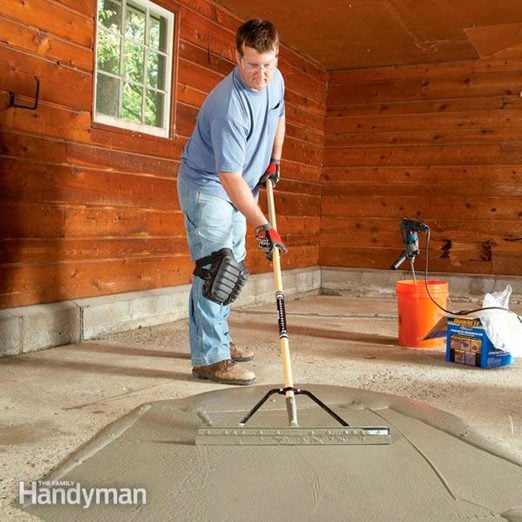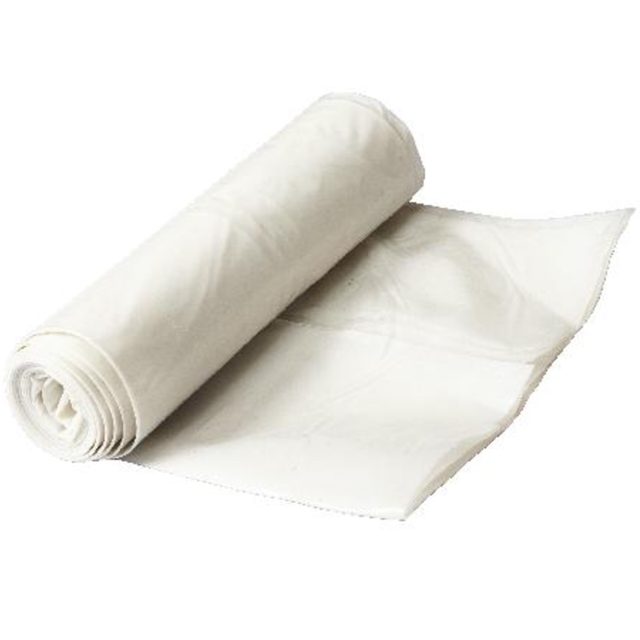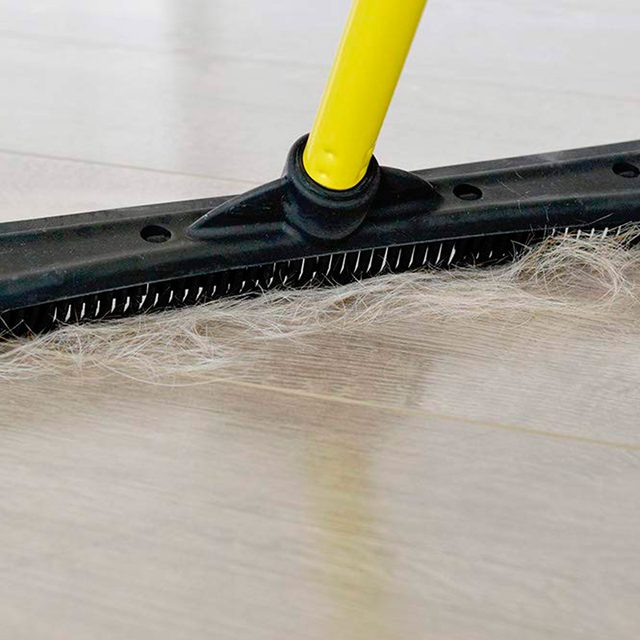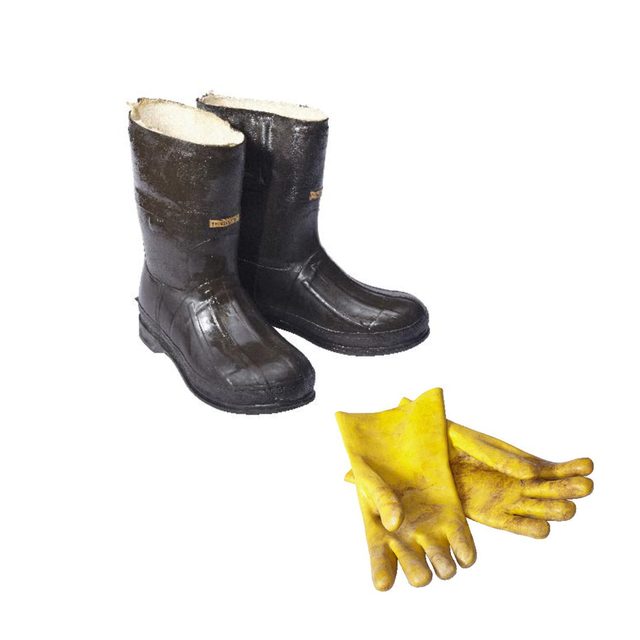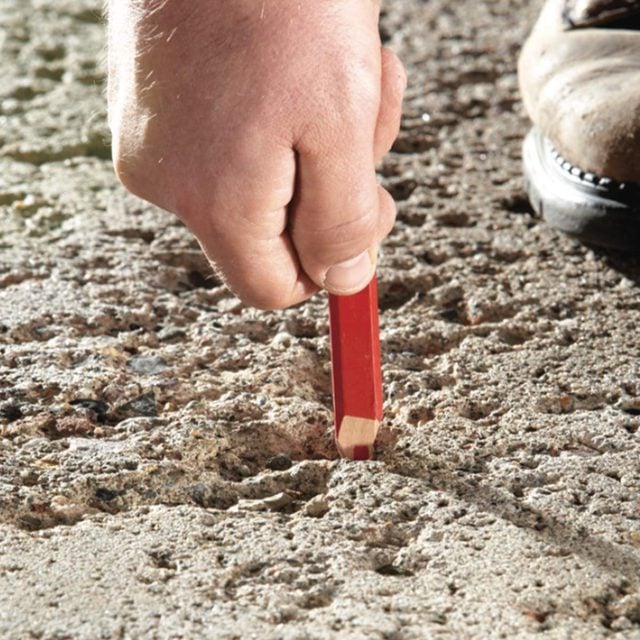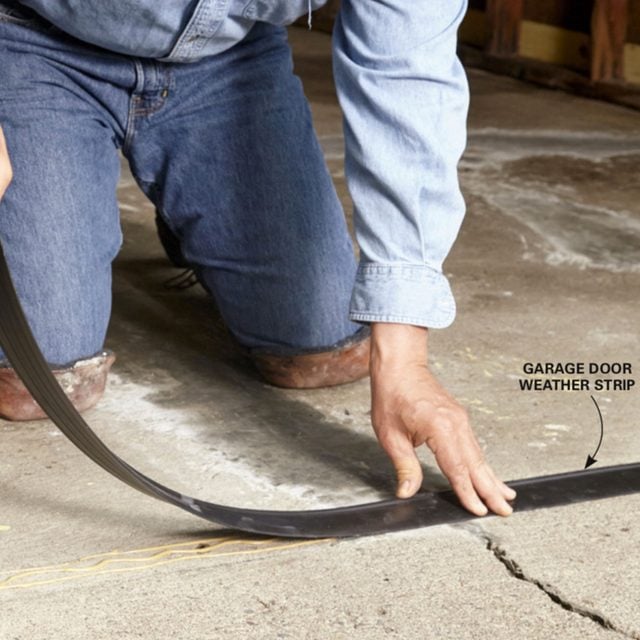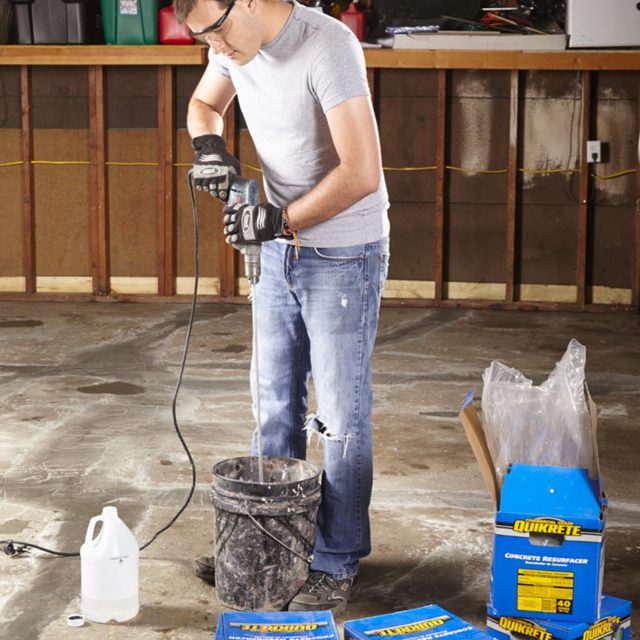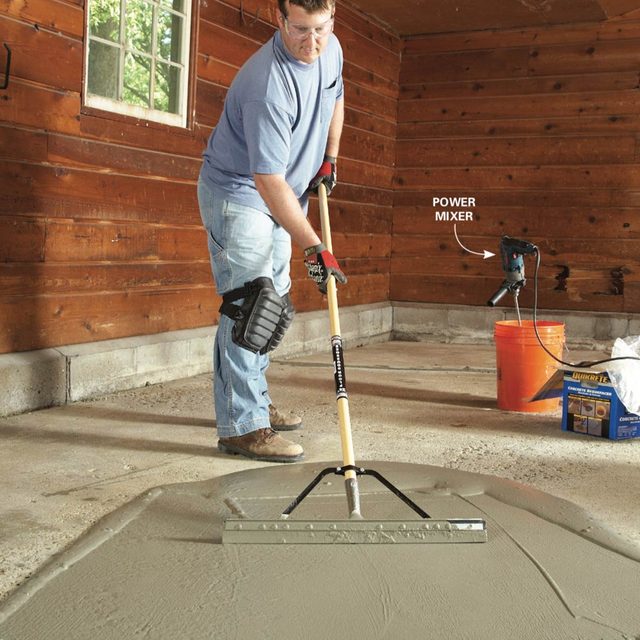Garage Floor Resurfacing: Fix a Pitted Garage Floor
Special concrete resurfacers will make a concrete floor look like new
Our editors and experts handpick every product we feature. We may earn a commission from your purchases.
Multiple Days
Beginner
$101–250
Introduction
Restore a pitted concrete garage floor with an easy-to-apply resurfacing product. It'll make the floor look fresh and new again at a modest price.Tools Required
- Bucket
- floor squeegee
- power mixer
- Pressure washer
- Push broom
- Trowel
Materials Required
- Concrete cleaner
- Concrete crack sealer
- Resurfacer
Project step-by-step (10)
Results to expect
If your slab is suffering from low self-esteem because of pits, craters or cracks, you can cover up those scars. Concrete “resurfacer” is a cement-based coating that forms a smooth, new surface right over the old concrete. The cost of resurfacer for a two-car garage is typically less than $200. You’ll also need to buy or rent some special tools, so expect your total cost to be about $300 for this how to resurface concrete project.
Cleaning the garage and resurfacing the floor usually takes one day (on the other hand, clearing out your garage so you can work may take weeks!). Spreading the resurfacer smoothly is the trickiest part of the project, so it helps to have some experience with concrete or drywall finishing. Cool weather, with temps in the 60s, also helps. Warmer weather makes resurfacer harden faster, reducing the time you have to finish the surface.
As a first-timer, you might achieve a perfectly smooth, flat finish. Or you might end up with a few rough spots and small ridges. But even if your work is far from flawless, you’ll still make a bad floor look much better. And remember this: If you make some major mistakes, you can add a second coat—this time with the benefit of experience.
Buy the materials
Resurfacer
We used Quikrete Concrete Resurfacer (about $20 for 40 lbs.). Similar products, such as Sakrete Flo-Coat, are available. Buy enough to resurface the whole floor. To estimate the amount you need, check the label and then buy two or three extra containers. Better to return some than to run out before the job’s done.
Plastic sheeting
Protect walls with a band at least 3 ft. high. We used 6-mil plastic, but lighter stuff will work too.
Brush and push broom
A stiff brush designed for stripping decks and mounted on a handle (shown) will keep you off your knees ($10). So will a push broom; get a push broom with the stiffest bristles you can find.
Squeegee
Get a beefy version designed for floors, not a lightweight window-cleaning tool. A quality squeegee will give you better results and is worth the price ($30 to $45).
Mixing equipment
A powerful 1/2-in. drill and a mixing attachment ($12) are the only way to go. Mixing by hand is too slow.
Protective gear
Rubber boots and gloves protect your skin against the degreaser and resurfacer (which can burn skin). You’ll also need eye and hearing protection. You’ll need a pressure washer, concrete cleaner (such as Quikrete Concrete & Stucco Wash No. 8601-15; at home centers), a brush, push broom and a floor squeegee. Buy enough concrete resurfacer material (such as Quikrete Concrete Resurfacer; 40-lb. bags) to coat the entire floor. Refer to the coverage specs on the bag to determine how many bags you need.
Everything you’ll need for this project is available at home centers. Aside from basic tools like a hammer and chisel, buckets and a steel trowel, you’ll need:
-
- Resurfacer
- Plastic sheeting
- Concrete cleaner
- Stiff, long-handle brush or push broom
- Pressure washer
- Squeegee
- Mixing equipment
- Protective gear
Clean the slab and fill deep holes and cracks
Start with a clean floor
Scrub with a concrete degreaser and a stiff brush, then follow up with a pressure washer. Rinse twice to remove all residue.
Find the deep pits
Make a mark 1/4 in. from the tip of a pencil. Use it as a depth gauge to locate pits and craters that need filling, then circle them.
Remove the loose stuff
Chisel away any loose fragments along cracks or craters; there’s no need to bust away concrete that’s firmly attached.
Concrete Floor Patch: Fill cracks, craters, divots and pits
Mix up a stiff batch of resurfacer, using just enough water for a workable consistency. Scrape off the excess so repairs are flush with the surrounding floor.
Create a dam
Glue weather strip to the floor exactly where the garage door rests. This will stop resurfacer from flowing onto the driveway. The cleaner the concrete, the better the resurfacer will stick. Start with a thorough sweeping. If you have oil spots to clean, scrub them with a deck brush and concrete cleaner. Once you’ve removed the stains, apply cleaner to the whole slab with the brush. Then fire up the pressure washer (Photo 1). Start in the back of the garage and work your way to the front, forcing the excess water out the overhead doorway.
Important: If you find that the cleaner doesn’t soak into the concrete but just beads up into droplets on the surface, you have a sealer over the concrete that you’ll need to remove. In that case, apply a stripper first to remove the sealer, then clean.
When the slab is clean, find and mark the deep (1/4 in. or deeper) pits and divots (Photo 2). Look for any pieces of concrete that the sprayer may have loosened. Chip these away (Photo 3) and collect the debris as you go, sweeping it into a dustpan with an old paintbrush. Now’s the time to fill these cracks, divots and pits. Mix some resurfacer to a mashed potato-like consistency and push the mix into the cracks. Smooth it with a cement trowel flush with the surrounding surface (Photo 4).
If you have expansion joints cut into the existing slab, push a weather strip into the joint. This will maintain the joint and give you a convenient time to stop and take a break. Apply and smooth no more than 150 sq. ft. of resurfacer at a time for the best results. You can glue a length of weather strip to the slab to define a stopping point if you don’t have a control joint and then continue from that edge once you’ve smoothed the first section.
For a nice-looking finished edge under the overhead door, we applied a heavy-duty vinyl weather strip (Photo 5) that we picked up at a local home center. Just be sure to dry the slab along the location with a hairdryer so your adhesive will work properly.
Mix and spread the resurfacer
Mix like mad
Recruit a helper to mix the resurfacer while you spread it. The material begins to stiffen quickly, so the faster you get it all mixed and applied, the better your results.
Spread it smooth, then let it set
Spread from the middle of the puddle. Push the squeegee forward under moderate pressure to work the resurfacer into the concrete and force it into pores and pits. Then drag it back to eliminate edge ridges and to smooth the coating. Continue spreading until you get even coverage. Aim for a thickness of 1/8 in. When you’ve covered the whole floor, let it cure for 24 hours before you drive on it. This is the time to recruit a helper. You’ll need one person to mix and another to spread resurfacer. Take two minutes to read the directions before mixing. The key to a smooth, lump-free mix is to let the resurfacer ‘slake,’ that is, sit in the bucket for a few minutes after the initial mixing. Then mix a bit more (Photo 6). It’s also good to have a slat of wood on hand to scrape the sides of the bucket as you mix.
Saturate the concrete with water and then use a broom to push out any puddles from the pitted areas or low spots. The concrete should be damp when you apply the resurfacer, but not wet to the touch. Pour the mix into a puddle on the slab and immediately spread it (Photo 7). Work quickly and carefully, blending each stroke into the previous one until you get a nice, uniform look. Smooth the resurfacer along the side walls by pulling the squeegee toward you. As you reach the edge of the door weather strip, use your steel trowel to gently blend the resurfacer against the weather strip. You can remove the excess with the trowel and drop it into a bucket.
To apply a nonslip texture, lightly drag a clean push broom in one direction across the still-wet material (allow no more than five minutes of setting time before applying the broom finish).
With the slab finished, let the mix set up. In hot, dry weather, it’s a good idea to mist the hardened surface; keeping it damp longer will allow the resurfacer to fully harden. After several hours, the finish will support foot traffic. If the pits still show, let the material set up and apply a second coat later in the day. But you can stop with one coat if it provides good coverage.
Depending on the weather, wait at least 24 hours before driving on your newly finished slab. Follow the manufacturer’s directions for additional hot-weather misting procedures or extra drying time for cool weather. After a few days of curing, you can apply a sealer if you’d like to protect the slab from oil and other stains.
Erase your mistakes
If you end up with ridges, shallow craters or squeegee marks, you don’t have to live with them forever. Go to a rental store and rent a concrete grinder for about $125 a day. It looks like a floor polisher, but it grinds down the surface, removing about 1/16 in. with each slow pass. It’s a dusty job that might take all day, but you’ll get a much smoother, flatter surface—perfect if you want to apply a finish like epoxy paint.
